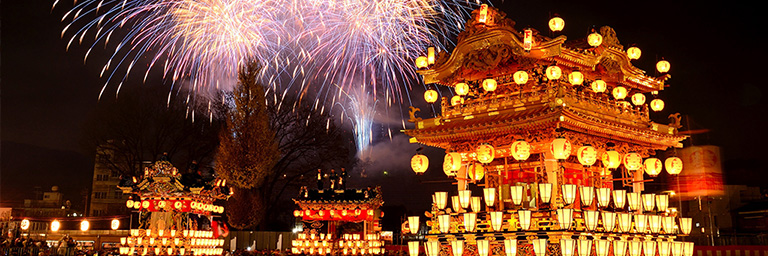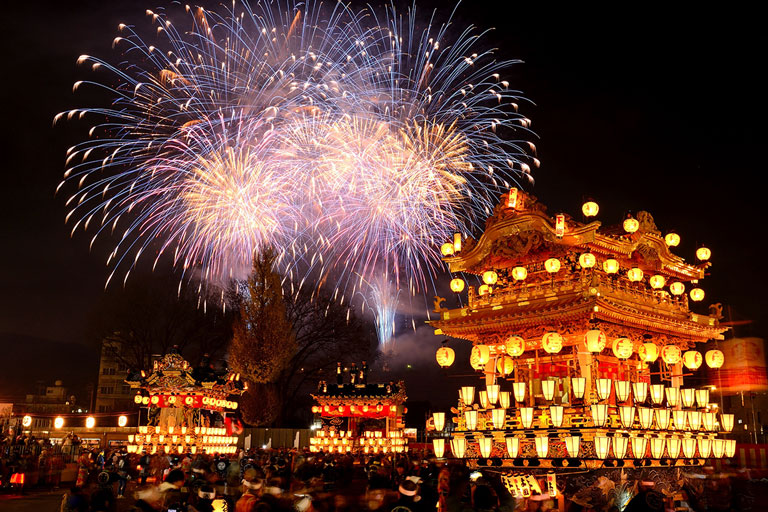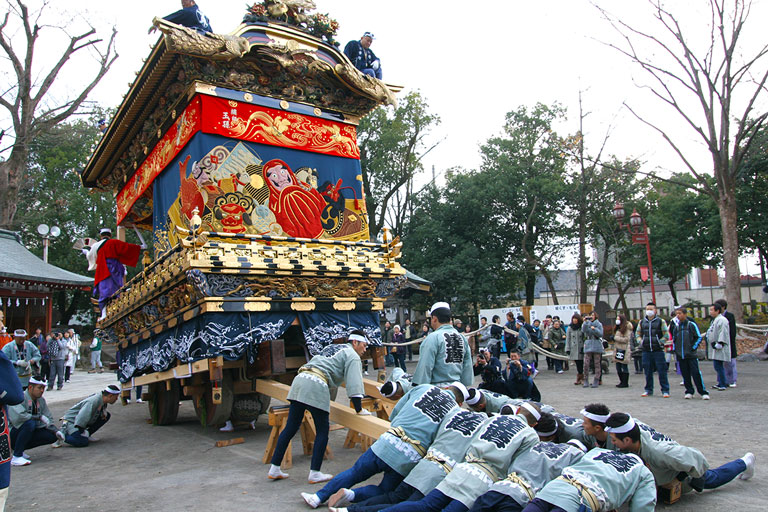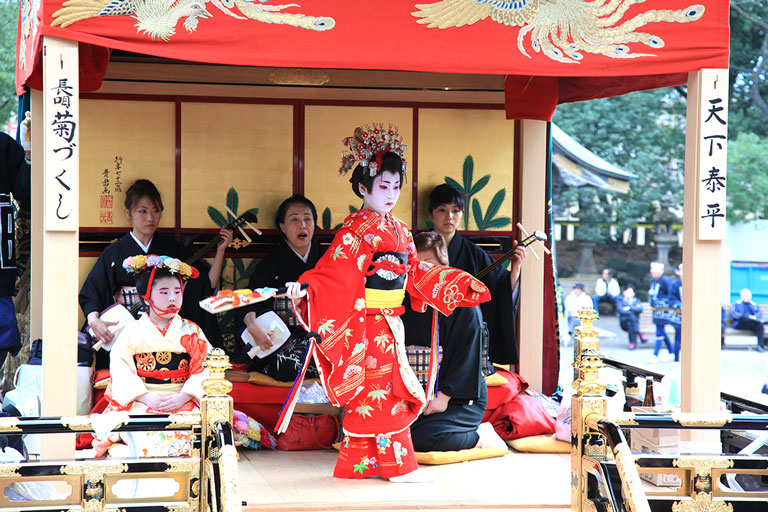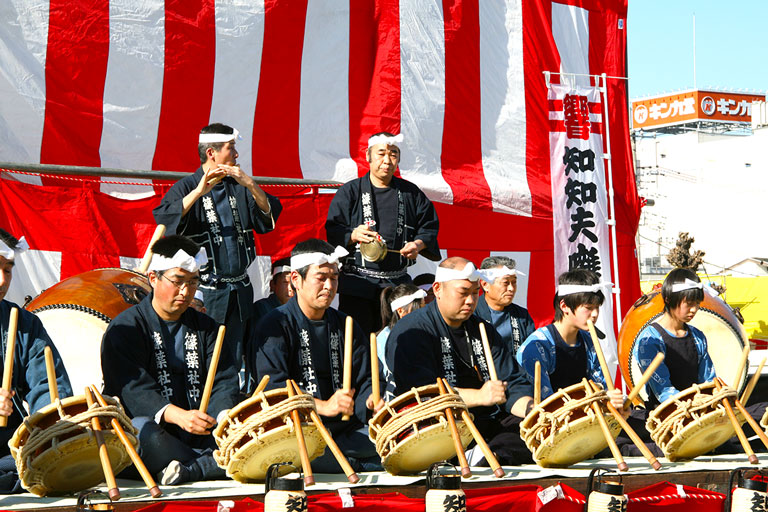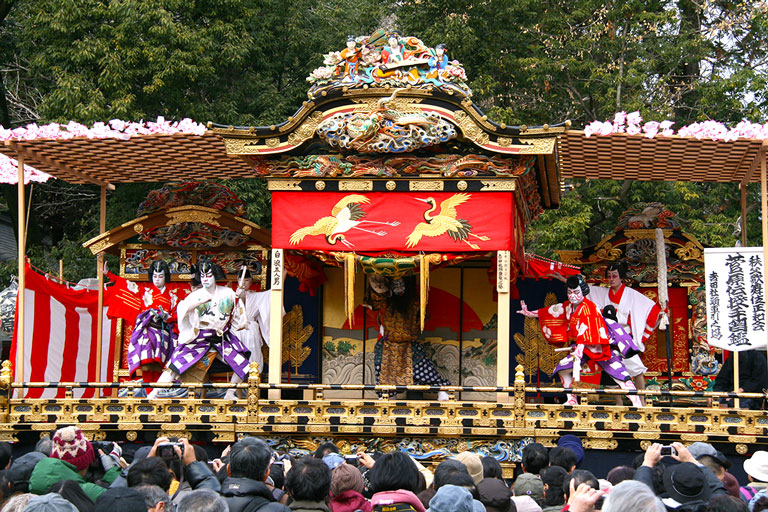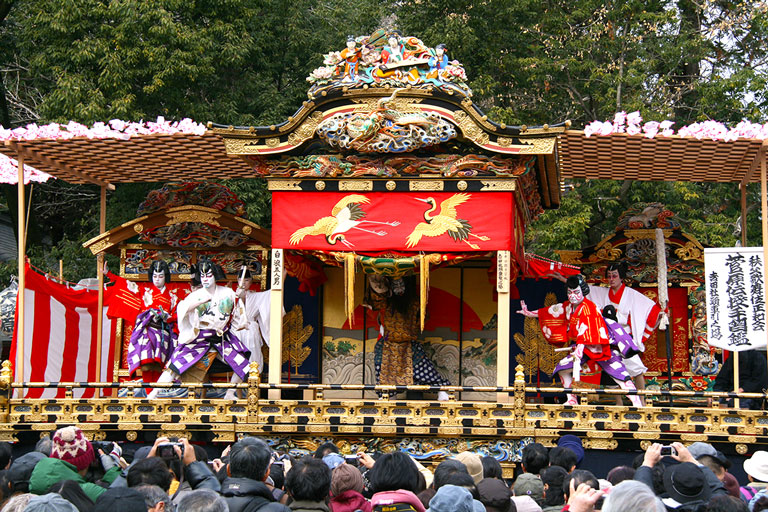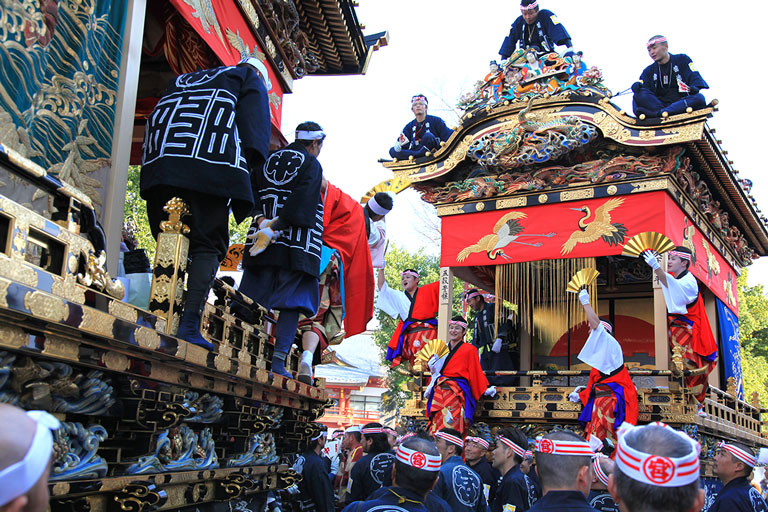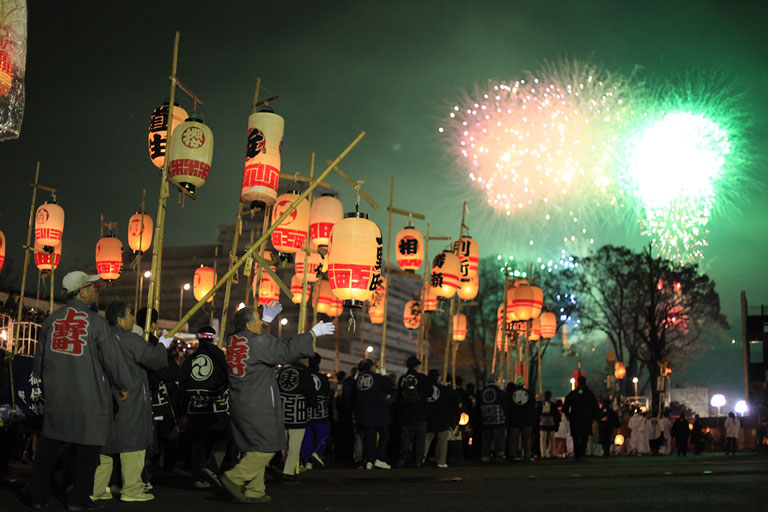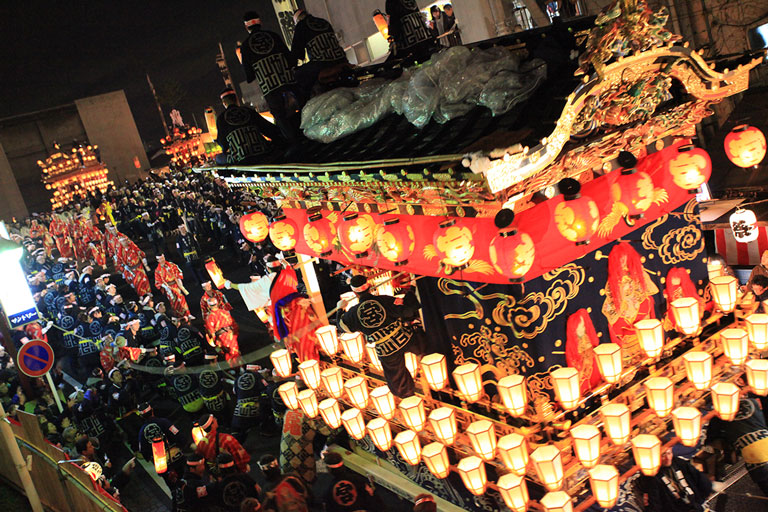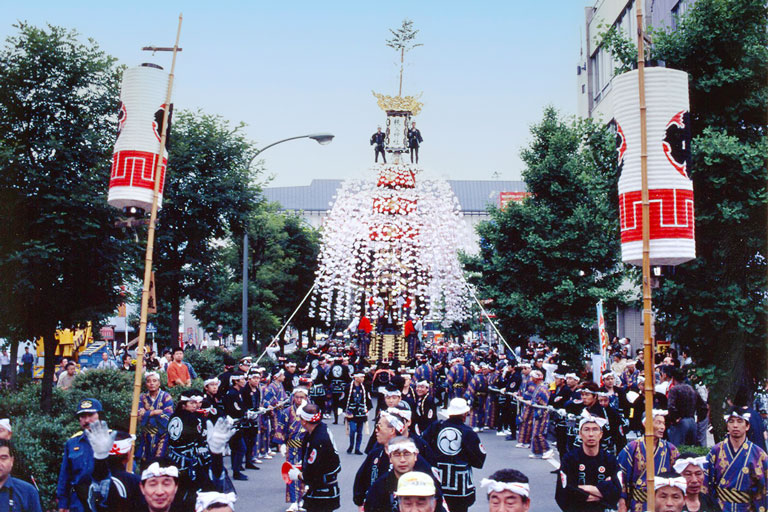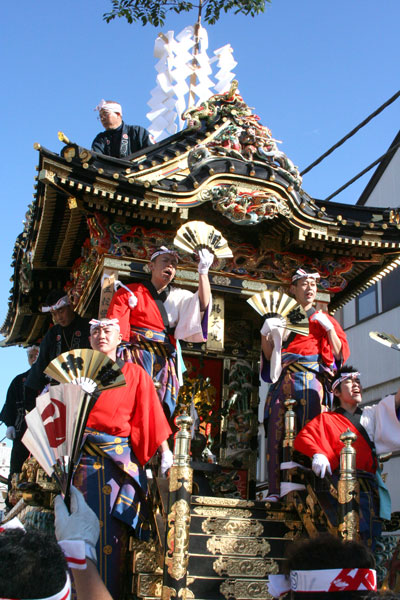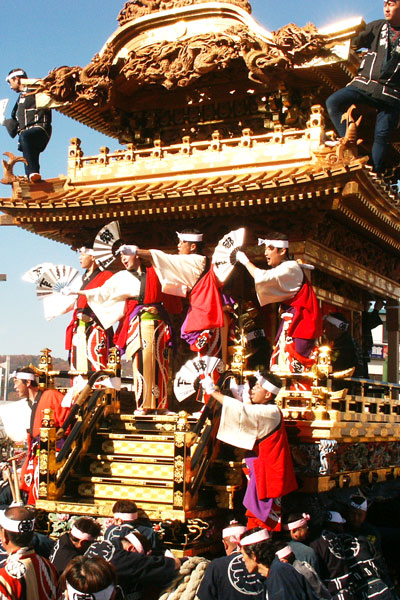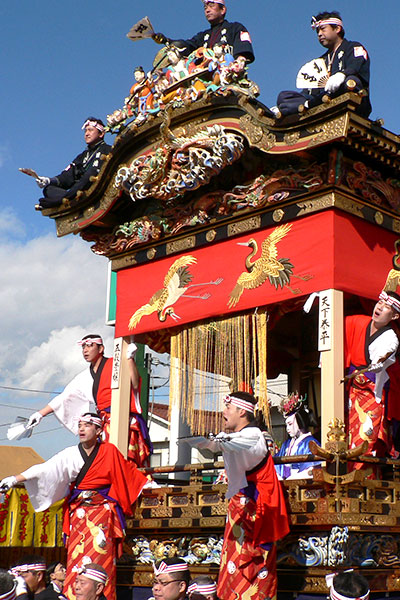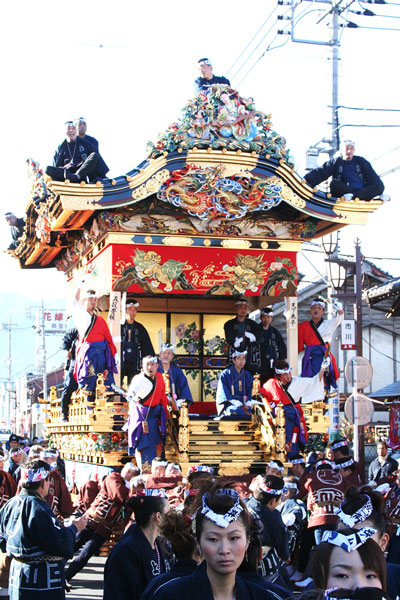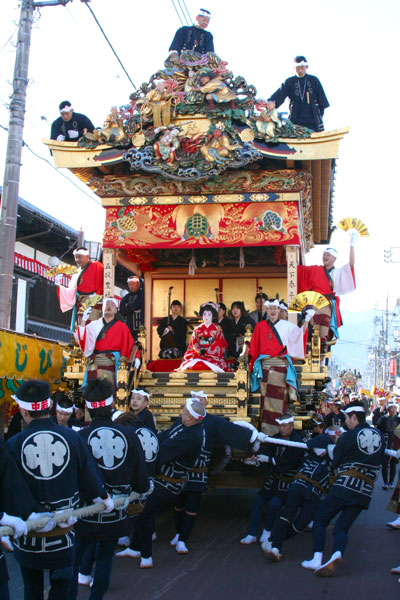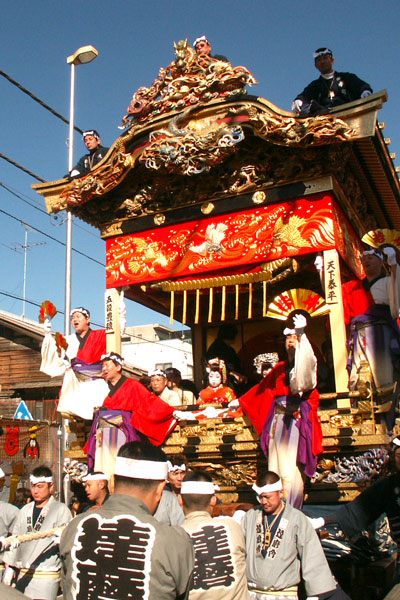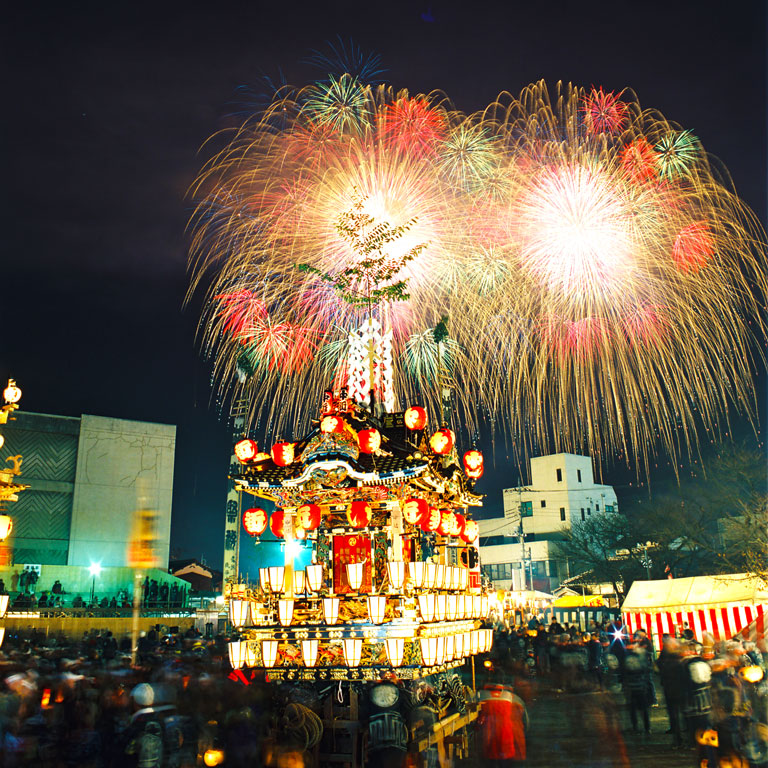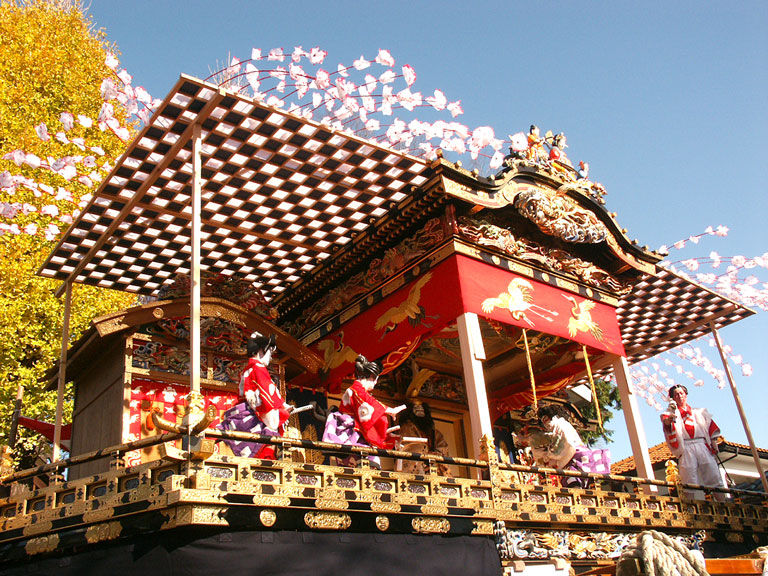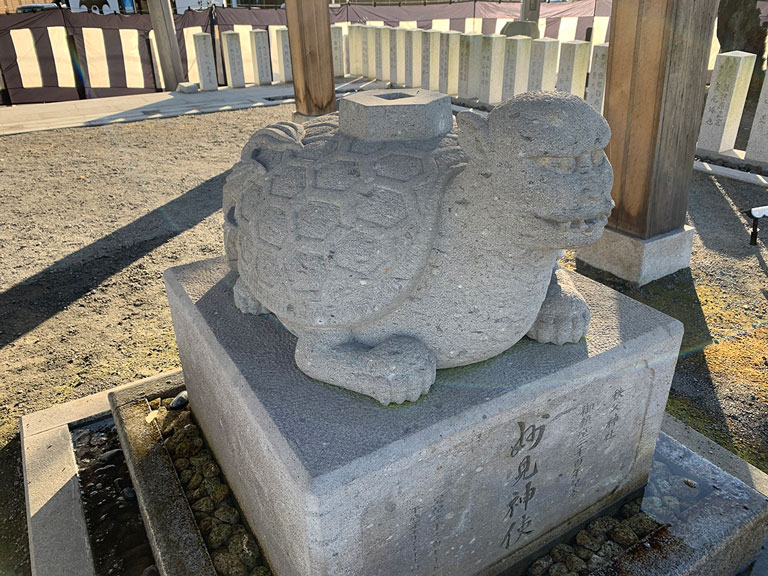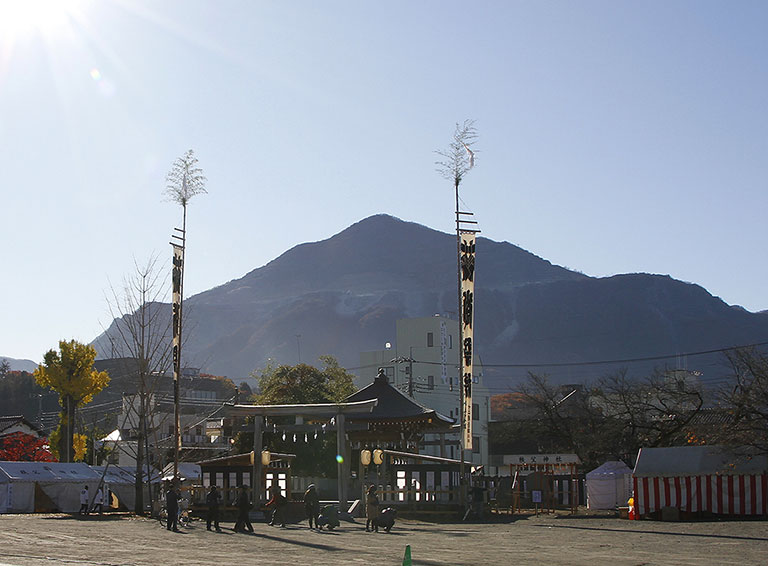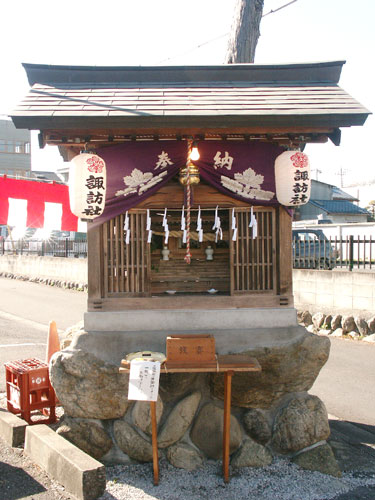What is Chichibu Yomatsuri(Night Festival)?
The Chichibu Yomatsuri(Night Festival), which started around 300 years ago, is now known as one of the three most popular float festivals in Japan, along with the Kyoto Gion Festival and the Hida Takayama Festival. There are 6 floats including 2 called “Kasaboko” which means flower parasols.
The Chichibu Yomatsuri(Night Festival) is the grand festival of Chichibu Shrine. People pull gorgeous floats around Chichibu, while kabuki is performed inside the floats. Fireworks light up the night sky and attract many visitors.
The festival has its origins in the middle of the Edo period with the development of the silk market which had opened up in the grounds of the shrine. The charm of the festival lies in the rich colors of the the paper-covered lanterns (“Bonbori”) which sway on the floats against a backdrop of fireworks in the winter sky.
“Chichibu Festival floats and Kagura (a Shinto theatrical dance) “are designated as a Important Intangible Folk Cultural Assets.
Yatai and Kasaboko ( Traditional Japanese festival float and flower parasol )
Inside the floats, people play the taiko drums while the floats are pulled around the town. The gorgeous floats were designated as Important Tangible Folk Cultural Assets in 1962.
There are also two “Kasaboko” or flower parasol floats, Nakachika and Shitagou. They incorporate objects that represent a divine spirit and have a long pillar standing in the middle which has a triple layer of parasols on top decorated with flowers. However, because electricity transmission wire was installed on the route of the Kasaboko in 1921, the original form of the Kasaboko cannot be reconstructed, and now it is pulled as a Yakata (festival float).
The four floats belong to the four local communities of Miyaji, Kami-machi, Naka-machi and Moto-machi, and community members take it in turns to perform Kabuki in the floats each year. Special overhanging stages are added to the each side of the float for the performers.
Nakachika Kasaboko ( Flower parasol)
The whole body of the Kasaboko is black and decorated in a palatial style with colorful engraving and decorations.
Shitagou Kasaboko
The largest and the heaviest of the 6 floats, it features white wood and gold decorations. Normally both Kasaboko’s parasols are removed before they are pulled around the town.
Miyaji Yatai ( Traditional Japanese festival float )
This exquisite float is the oldest of the Chichibu floats. The rear curtain displays an imaginary sacred beast. The front top curtain displays flying cranes.
Kamimachi Yatai
The largest of the four floats. This ornate float features many brilliant eaves. Keep an eye out for the Karajishi ( the form of a lion) and peony flowers on the front top curtain. The rear curtain features embroidery of carp swimming up a waterfall.
Nakamachi Yatai
The front and rear of the float are adorned with wooden masks of an imaginary beast (“Oni Ita”) which are the biggest of the 4 floats. The carved pictures depict an episode from Japanese myths about the “Mise no Iwatobiraki” and the “Susanowonomikoto no Daija Taiji”.
Motomachi Yatai
The carving and decorations are gorgeous. The rear curtain is embroidered with”Takarabune”(a ship that the seven gods of fortune ride in), and the distinctive Daruma (red-painted good-luck doll)
Fireworks
The fireworks provide a gorgeous backdrop to the floats. In Japanese, the word for fireworks literally means “flowers in the sky”.
The “Shakudama” and the “Star Mine”( types of fireworks ) are launched from Hitsujiyama Park, which is famous for its phlox flowers in the spring.
Many people think that fireworks are a symbol of summer in Japan, but in Chichibu, they are a symbol of winter.
The fireworks are more vivid and dynamic in the clear night skies of winter, and much loved by the children of Chichibu. Star mine is the fireworks that are fired off in quick succession.
Kabuki performance on the Yatai
The local communities staging kabuki performances on their floats start preparations to determinate the program and cast the performers more than one year in advance. They start practicing in earnest in the spring.
As the kabuki performances on the floats became popular, each community competed with each other.
When one community staged a Kabuki performance, others went to watch..
The unique style of staging on the float, assembling the performers and performing it is uncommon in Japan.
Kame no ko ishi ( turtle stone ) and Suwa Shrine
Chichibu Shrine’s Goddess Myoken and Mt. Buko’s Shenmaru dragon God meet once a year in the festival of Chichibu shrine. It is also known as a “winter version of the Tanabata story”.
Strangely, the Chichibu shrine, Kame no ko ishi (turtle stone), and Buko mountain are lined up on a straight line on the map, and the Polaris star can be found on a line extending to the north.
Nowadays, the parade of the festival goes to “Kame no ko ishi” through the Motomachi Street, whereas previously people passed along the Bamba Street in front Chichibu Shrine.
When the parade passes near Suwa shrine, everyone becomes quiet and musicians stop accompaniment to show respect for the Gods. This is called “O Suwa watari (wandering)” and is still being done at the Festival.
This is the one of religious encents which originates in the Suwa faith that was rooted in the Chichibu district before the Goddess Myoken was enshrined in the Chichibu Shrine, and it seems that it is an event named after the God Suwa who is thought to be the protector in this area.
Chichibu’s Suwa Shrine is affiliated with the Suwa Taisha Shrine in Nagano which is famous for its Onbashira Festival. In Chichibu, the God of Suwa is worshipped in many places together with water Gods, and many villages in the area have their own Suwa shrines.
Every year on December 2nd, the eve of the night festival, ceremonies are held at the Suwa Shrine in Banba Street. It can be said that festival rites are held for the local Gods first before the main ceremony begins.
This is likened to the relationship between men and women, and the traditions of the Suwa faith are handed down even today.
